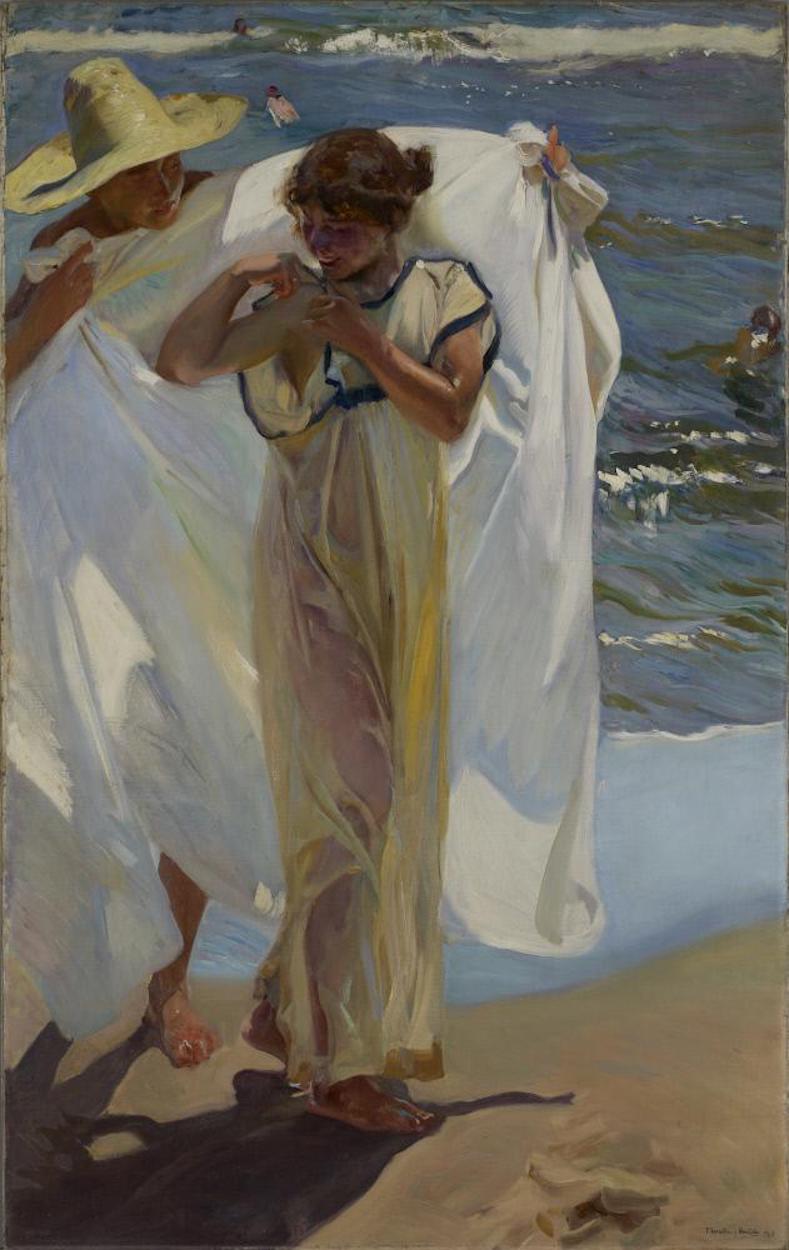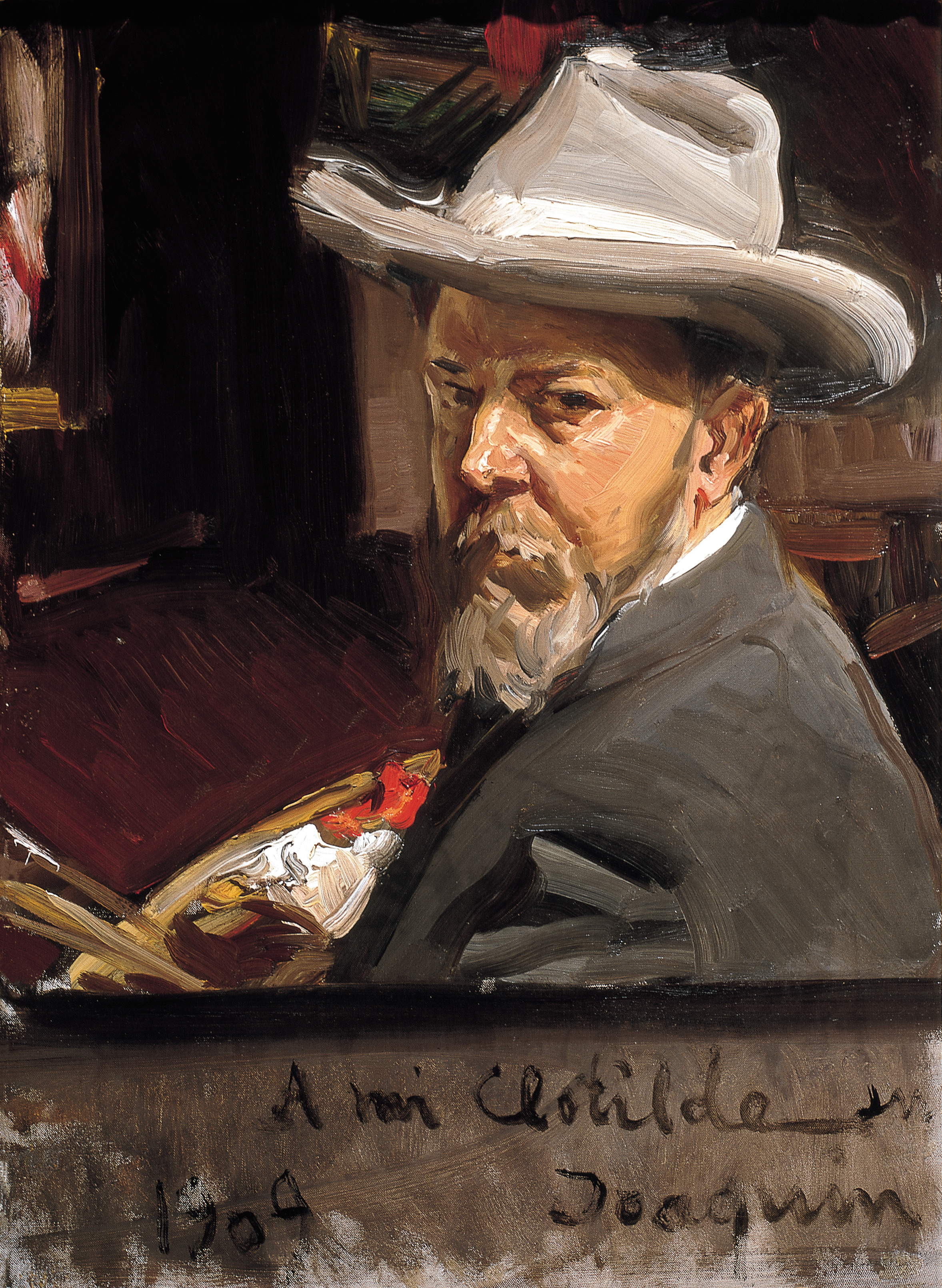Dear Greek users of DailyArt - today we have launched Greek language version of the app so please update the app! :)
Although Joaquín Sorolla’s beach scenes generally exhibit an astonishing visual variety and thematic interest, few examples in his entire oeuvre present the complex mix of narrative, artistic references, scintillating brushwork, and stunning illusion of the play of light as After the Bath. The mis-en-scène is simple, the figures placed close to the viewer. A young couple meets on the beach. She has just come up from the surf, the damp folds of her bata (swimming smock) clinging to her adolescent body. A button has come undone, and as she turns to attach it, she smiles coyly for the benefit of the young fisherman (identified by his straw hat) holding up her bath sheet. His hypnotized stare suggests her charms are not without effect: viewers often comment that while he is the fisherman, she has her hook in him.
The story told is frankly erotic but gently humorous in its psychology and, surprisingly, not in the least prurient. Light pours over them, directly from above right, reflected from the water (leaving blue touches on her toes), bouncing up as half-light from the sand, and transmitted through the sheet in a symphony of yellows, pinks, and aquamarines. The background is entirely abstract.
Notwithstanding the image’s seeming spontaneity, it draws on famous works of art. In fact, the motif of the composition is identical with that of a celebrated masterpiece of Italian Renaissance art, The Birth of Venus by Sandro Botticelli (1445–1510), which shows the goddess born out of the waves, with attendants holding up a sheet behind her. What is more, while the figure of the young Valencian woman must clearly have been taken from life, it conforms to an antique statue that Sorolla knew well from museums in Rome and Paris: the Venus Genetrix. Sorolla was so taken with this statue that he placed a cast of it in his garden at Madrid. As such, these examples reveal Sorolla’s ability to absorb previous works of art and integrate them seamlessly in his own dazzling images of Spain in the early 20th century.
- MBB
We present today's beautiful painting thanks to The Hispanic Society of America. <3
P.S. Here are 8 things everyone should know about Joaquin Sorolla.


 Joaquín Sorolla
Joaquín Sorolla